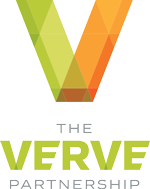Editor’s Eye on Baltimore: Why Design Matters
A Conversation with Kelly Ennis – By: Newt Fowler, nfowler@rosenbergmartin.com
From the recent conversations with Dave Troy, we have seen there is a sea change in culture, placing increasing stress on the traditional organization to sort out how to motivate this new breed of entrepreneurs. Kelly outlines how rethinking the concept of “space” is moving leading organizations forward in reshaping work environments to unleash creativity and productivity.
The Skinny. The Verve Partnership is a design firm that uses the power of information, sector specific research, and business strategy to design and plan work-space. Kelly Ennis, Principal of The Verve Partnership, has been involved in researching how culture, brand and technology work together to impact the work environment.
Design Beyond Foosball. Kelly has spent a lot of time thinking about why design matters in business. For many entrepreneurs (she included), design has been reduced to plywood desk assembly parties and foosball tables. Kelly views this as a topical solution that requires “no serious consideration of the strategic value of design input.”
Such an approach, in her perspective, loses the entrepreneurial power released when design and space are interconnected. For early stage and high growth companies, in particular, what Kelly often sees is a disconnect that begins in the earliest days where space needs are addressed with no thought given to an overall strategic plan.
Design Drives Behavior. So why does design matter? “Design affects behavior,” for Kelly, “it affects productivity, engagement, retention and revenue.” This probably sounds obvious, but it is much harder to bring to reality than it appears. The environment an entrepreneur shapes for his workers will affect that company’s culture, productivity and success. Kelly underscored that there are critical nuances between company business models, markets and workforces. “Even with an entrepreneurial mindset, a creative culture is much different than an analytic culture,” and these cultures vary across industries and stage of company. Kelly believes that the effort to understand how a team will interact, think, create, produce and execute can be enhanced by design and, concomitantly, limited by its absence. “More often than not, design strategies are not put in place early and [the resulting] space is disconnected to brand, disconnected to [the company’s] culture and aesthetically unappealing.”
Design as an Afterthought. The design “discussion” often unfolds long after a space has been identified and the conversation is often shaped by budget, with the landlord and entrepreneur as tenant sorting through ‘value engineering’ the build out with a budget already under constraint. When design is an afterthought, according to Kelly, it costs the company more in the long run. For those entrepreneurs who put design in the front of their thinking, there are a lot of interesting trends to understand.
Three Design Paradigms. In Kelly’s mind, there are three basic steps to structure an entrepreneur’s thinking about space and design.
Understand Collaborative Behavior. First, understand how your workers, partners and customers communicate and collaborate. More subtly, understand whether and how these interactions differ hen involving product or service design and development, to sales and marketing, to support and feedback. Understand how these different groups interact between these relationship stages.
Design Enables Engagement. Second, realize that design is about engagement—not about control—it’s about creating environments that foster behaviors that allow information and ideas to flow. “Space, the design of the workplace, is the pulse of what supports a company’s spirit, culture and ultimately revenue stream.” According to elly, “it is an inside-out approach,” that allows a well designed environment to be “the heart and soul of the people who are in it.”
Design Extends Brand. Third, recognize that the design being discussed here is in the end an extension of brand – by designing uniquely collaborative space, companies can connect their brand to their organizational culture. Kelly sees “companies starting the design conversation early, as if it is (and should be) part of an overall business, brand and marketing strategy.”
Beyond the Cubicle. “Gone is the formulaic thinking of standardized cubes and boxes” for the workplace. Instead, Kelly indicates that we are moving towards a “more organic,collaborative and community building type of approach to design.” Design conversations, in these leading companies, are occurring earlier and are more integrated into the overall business strategy. In essence, design is becoming a greater part of the strategic plan for these entrepreneurs.
A Generational Paradigm. Also contributing to the rethinking of space is an increasing awareness of the workplace dynamics of Gen Y and Millennial workers, who work differently, use space differently, and communicate differently, forcing companies to “see differently the way space is utilized.” Organizations that capitalize on the new reality can allow design to unleash rather than restrict “the sense of freedom and appreciation for technology to work anywhere/anytime and [use] design to support [these workers,” according to Kelly, will see enhanced profitability and growth.
The Take Away. Space has always been a component of businesses and their culture, yet the financial pressure to optimize space with a “cube farm” mentality is giving way to optimizing it for collaboration. The irony of this new conversation on space is that for those organizations which get their design strategy right, costs per employee are often lower than before. An ironic result, given today’s paradigm that conversations on design are really conversations about increased costs. With this new paradigm, space isn’t really about geography, but about fostering collaborative, creative environments that drive profitability.
Kelly can be reached at: kennis@ thevervepartnership.com
www.thevervepartnership.com
With more than 25 years experience in law and business, Newt Fowler advises many of the Greater Baltimore region’s entrepreneurs and technology companies, guiding them through all aspects of business planning, technology commercialization, and M&A and financing transactions.



